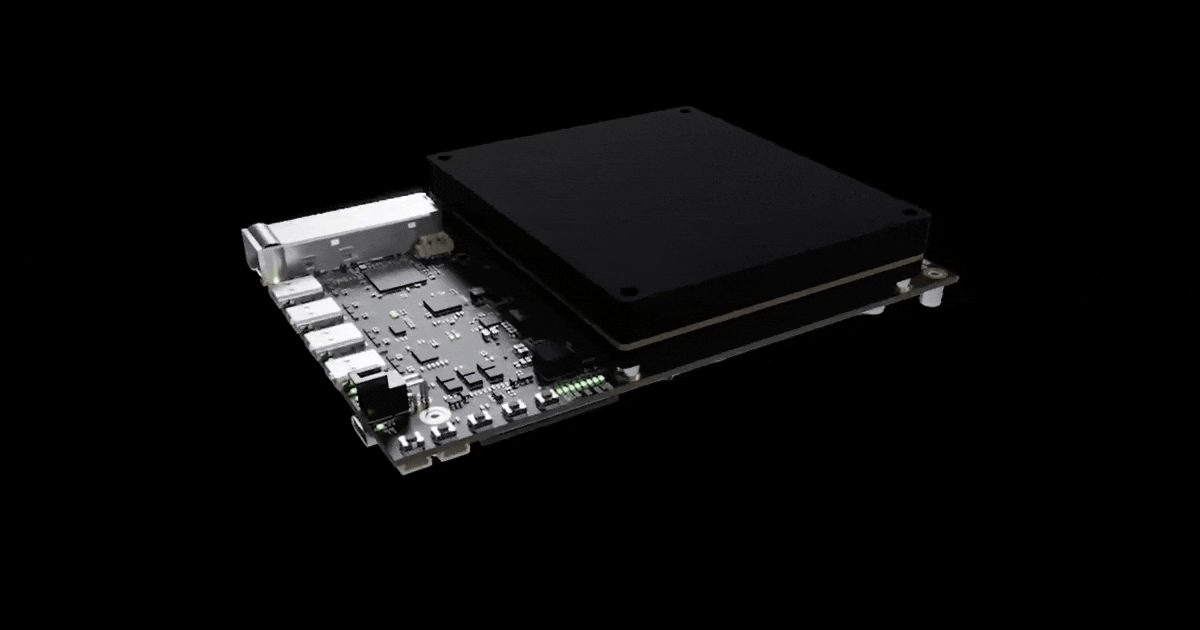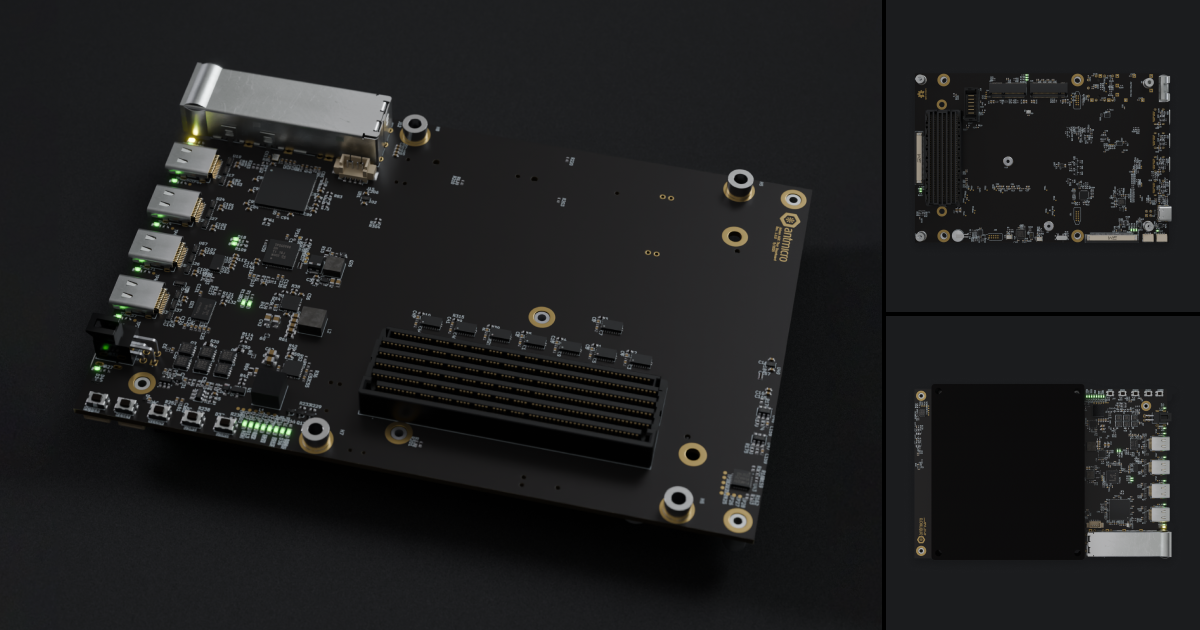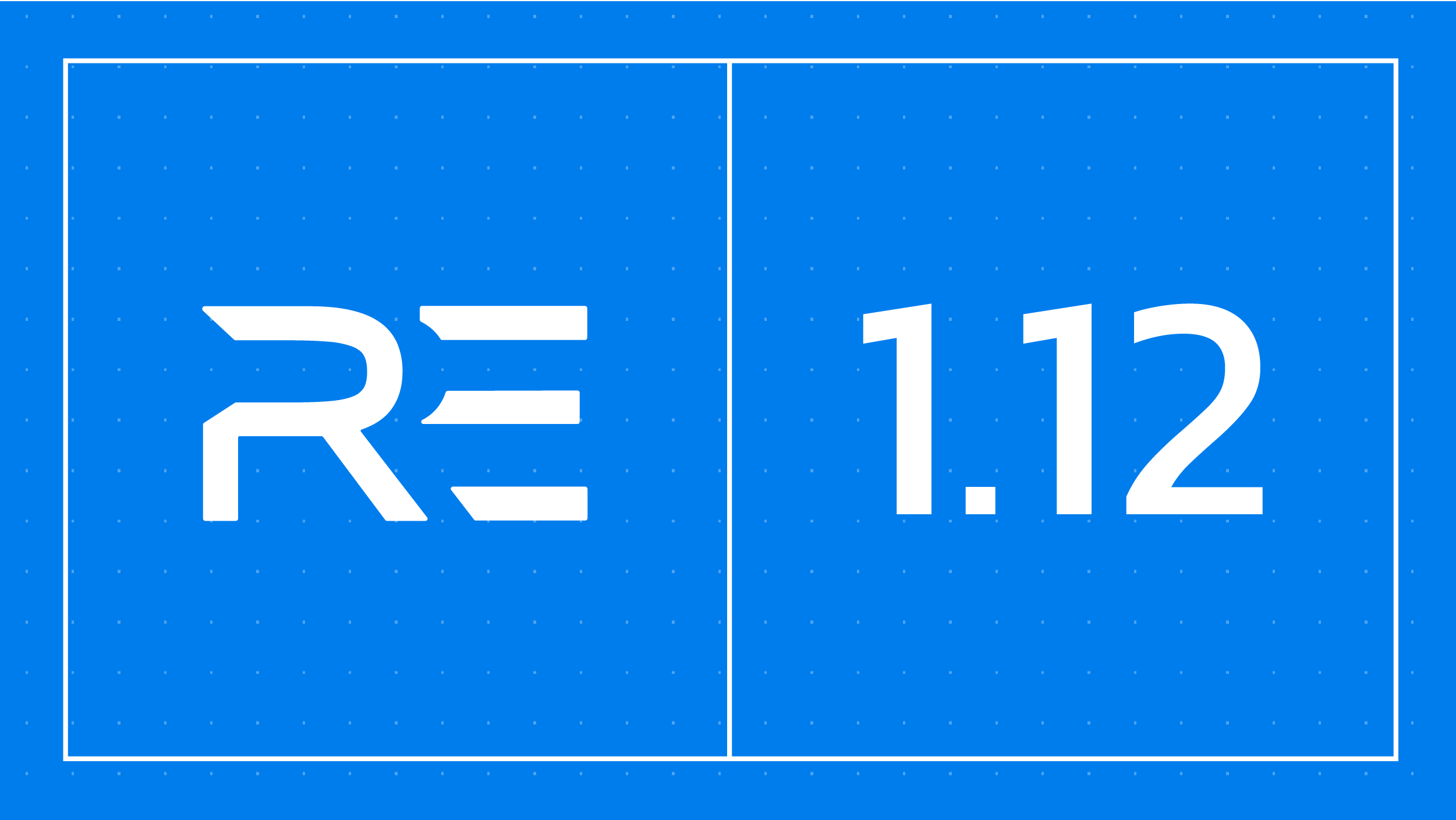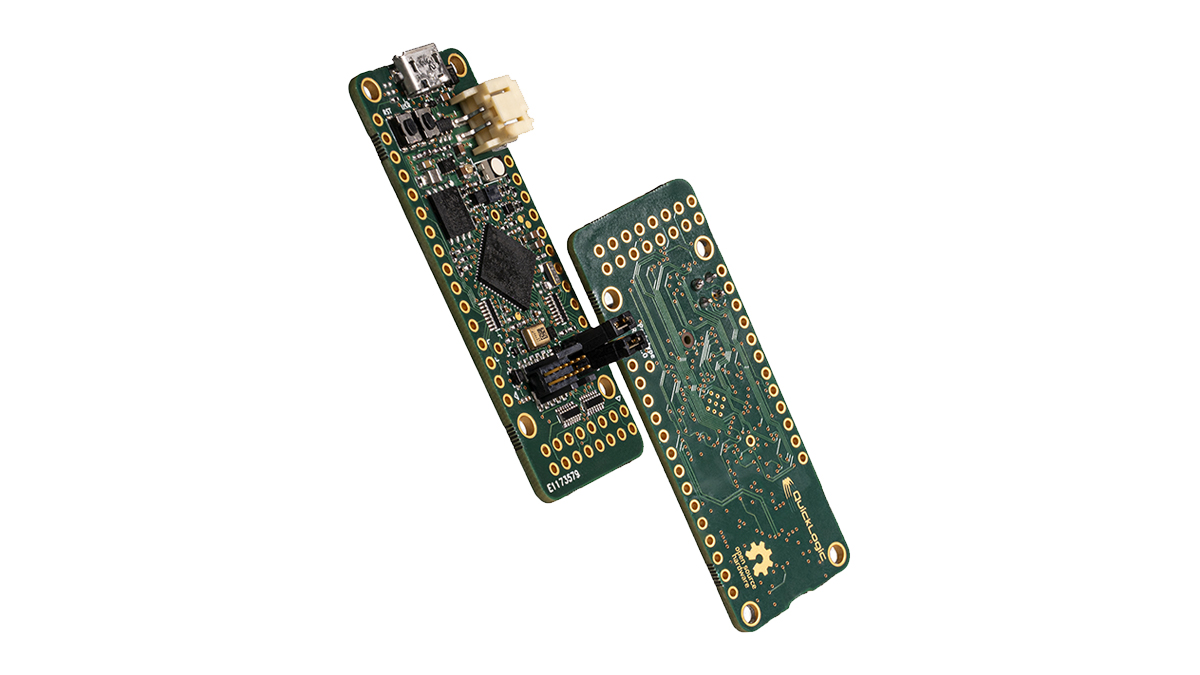Antmicro’s broad portfolio of open hardware designs includes numerous NVIDIA Jetson-based platforms, with the versatile Jetson Orin Baseboard leading the way as one of Antmicro’s most popular projects, used across different industries, including space.
With the recent release of NVIDIA’s new Jetson AGX Thor SoM, providing significantly more computing power than its predecessor, Antmicro has created a new dedicated Jetson baseboard. The platform allows our customers to accelerate the development of Thor-based products in applications that demand that extra compute power, such as computing clusters, video-enhanced systems, heavy GPU-accelerated processing, physical AI, humanoid robots, and more.
In this article, we introduce Antmicro’s Jetson AGX Thor Baseboard, the newest addition to the ecosystem of open source, modular and easily customizable baseboards, which Antmicro has been extending with each release of subsequent NVIDIA Jetson edge AI platforms. We will go over the baseboard’s features and show the potential use cases it enables, including clustering options and advanced AI processing.

Jetson AGX Thor Baseboard overview
Antmicro’s Jetson AGX Thor Baseboard targets the Jetson Thor AGX T5000 SoM, which offers PCIe Gen 5 operating at 32 Gbps per lane and features 128 GB of LPDDR5X memory, making it an extremely capable embedded platform, even when compared to traditional, PC-oriented graphics cards. Antmicro’s open hardware baseboard break-routes common I/O interfaces for the SOM both for standard desktop ‘devkit’ style use, but can also be used as a base for a custom integration into productized embedded computing system through our complex engineering services (which include a broad array of software capabilities and open source frameworks for OTA, fleet management, automated testing, complex AI integrations and more).
The baseboard’s outline is just 100 x 180 mm (3.93 x 7.08 inch) and it has been designed to allow installing the cooling aperture on top of the SoM plugged into the baseboard, which introduces some flexibility in enclosure design and resolving thermal management.
For standalone desktop applications, the Thor baseboard exposes standard I/O interfaces such as a range of USB-C interfaces for connecting typical desktop peripherals. One of the on-board USB-C port features ALT mode, capable of displaying video. The baseboard also features two camera expansion ports with a standardized Antmicro 50-pin flat cable interface, each exposing two 4-lane CSI interfaces, operating at 2.5Gb/s per lane. Each of those can be configured via an independent I2C bus, making it possible to use the Thor baseboard with multi-camera applications.
Antmicro’s hardware portfolio includes a variety of video accessories that are electrically compatible with the Jetson AGX Thor Baseboard, including a GMSL Deserializer and an SDI-MIPI Video Converter. This provides a perfect starting point for creating derived, customized devices for advanced machine vision, robotics, science, and high-end industrial or medical applications.

Clustering multiple Thor baseboards for more computing power
Besides the desktop and embedded application, Antmicro’s AGX Thor Baseboard has been designed to make it easily expandable into cluster-like solutions (which Antmicro is currently developing both for terrestrial and space applications).
The board includes an FMC+ expansion connector which break-routes some typical I/O interfaces such as DisplayPort, CAN, UART, SPI and I2S. Furthermore, the FMC interface exposes two independent PCIe Gen 5.0 x1 and x2 interfaces. PCIe x1 can act in endpoint mode and both can act as root ports. That makes it possible to interface the Thor SoM directly with other processing modules, high bandwidth transceivers or FPGA-driven systems by using matching FMC-accessories and adapters.
This opens new possibilities for development of next-gen devices which combine FPGA front-end for precise, low-latency data collection, AI inference on the GPU and advanced data processing on the CPU.
The FMC expansion connector also allows for rapid development of custom accessories, adapters, transceivers and converters that are modified to specific customer use cases. With this flexibility, the baseboard is suitable for building technology demonstrators and utilizing the design in early proof-of-concepts, which is another core part of Antmicro’s offering, often followed by product development, validation and integration. Our customers typically get to market first with the most capable embedded computing platform of the day - which, in this case, is the NVIDIA Jetson AGX Thor.
The PCIe interfaces exposed on FMC also allows converting the Thor Baseboard into a PCIe-like card that can be installed in a server or PC motherboards. The mechanical form factor of the Thor baseboard allows using it in a blade-server configuration in a rack cabinet setup. In such a scenario, the baseboard along with a basic enclosure will occupy 2U when installed in vertical orientation.
The enclosure for a rack-mounted setup can feature a liquid or gas cooling solution, depending on the use case. Multiple Thor baseboards in a rack mount can be used as custom CI runners that feature advanced AI training and evaluation algorithms or support Hardware-In-the-Loop (HIL) testing scenarios.
Next-gen complex AI products with Thor: physical AI, humanoid robotics and more
The Jetson Thor SoM comes with 2560 NVIDIA CUDA cores and 96 fifth-generation Tensor Cores, which allow running massive amounts of parallel computations on both dense and sparse tensors of varying data types, down to 4-bit values. This includes MXFP4 and NVFP4 formats, enabling effective compression of large models without sacrificing much performance. Combined with the fact the Jetson Thor is shipped with 128 GB of shared CPU and GPU RAM, it allows running state-of-the art large language and multi-modal models.
As a result, you can run advanced models that would otherwise be reserved predominantly for GPU-accelerated HPC solutions in data centers (such as the NVIDIA H200 Tensor Core GPU), without the need of running excessive optimization algorithms and sacrificing the quality of predictions. For example, one of the state-of-the-art LLMs gpt-oss 120B with MXFP4 weights can be loaded entirely in NVIDIA Jetson Thor and executed using the llama.cpp runtime at around 20-30 tokens per second and around 65 GB of global RAM consumption. This is one of several models that we are currently benchmarking with our Kenning benchmarking and optimization framework - more details will be shared in an upcoming blog note, similar to the one we did back for Jetson AGX Orin.
Additionally, Jetson Thor comes with two pairs of video encoders/decoders capable of processing up to 8Kp30 video streams. This feature, paired with the massive amount of resources and Multi-Process Service allows running various image processing models in parallel on all images or selectively. You can easily run models for pose estimation, depth estimation, object detection and segmentation in parallel (e.g. with the help of ROS 2), providing a great runway for developing robotics solutions.
Build your Jetson Thor-based product with Antmicro
With the vast new possibilities offered by the Jetson AGX Thor Baseboard, Antmicro can help you develop complete solutions, from embedded vision systems through edge AI to specialized size-constrained devices. By employing our transparent hardware development process, we bring your Thor-based product from design to prototype to kickstart a production batch that can be thoroughly tested using our In-Circuit Testing setup, significantly shortening time-to-market.
If you would like to discuss your project and learn how Antmicro’s open source expertise and engineering services can benefit your product development cycle using NVIDIA’s embedded modules, reach out to us at contact@antmicro.com.


